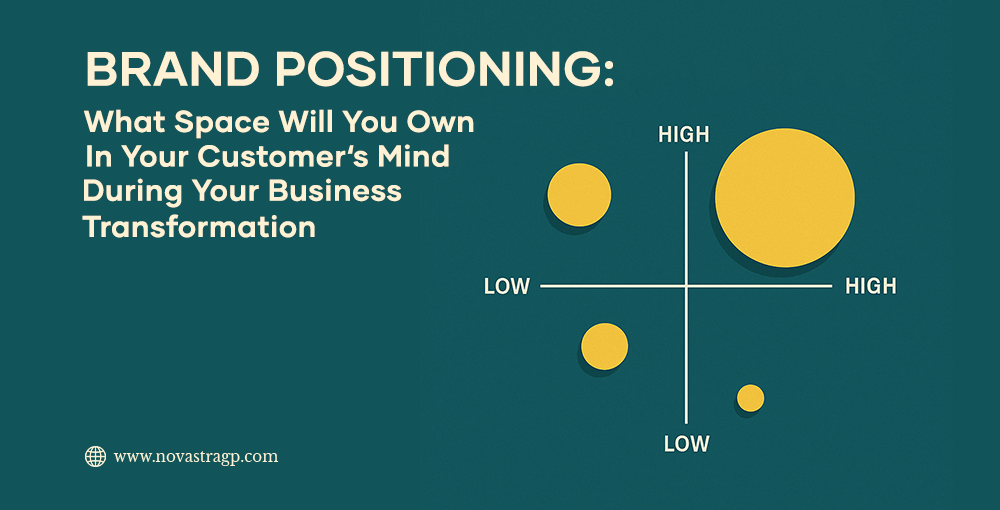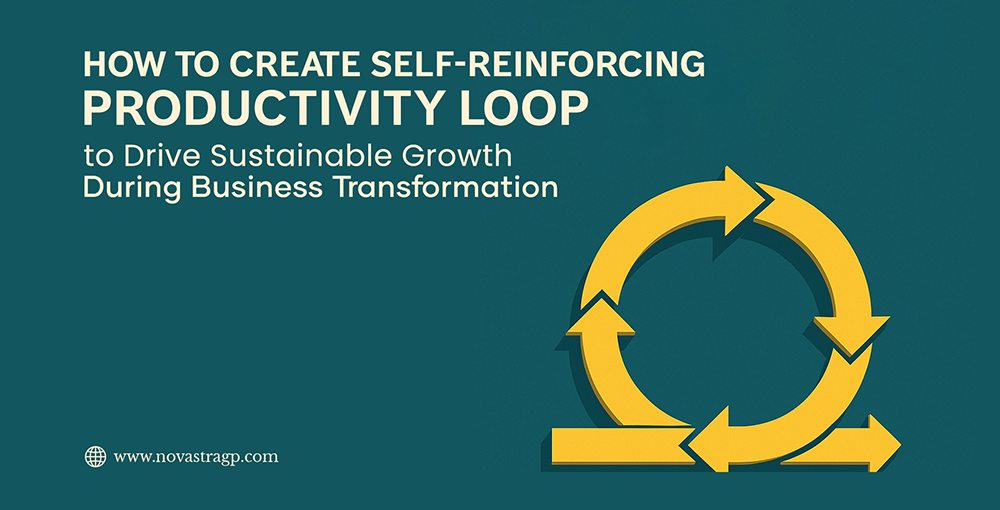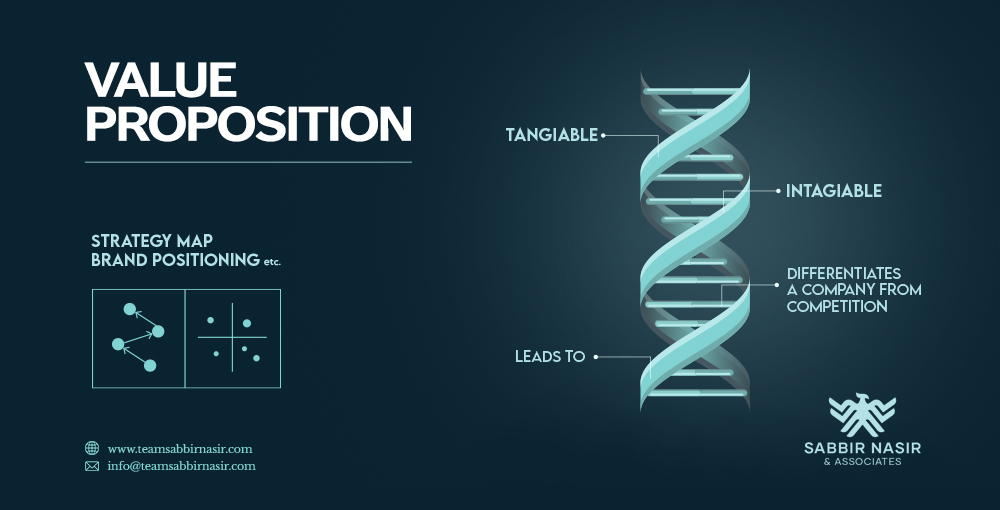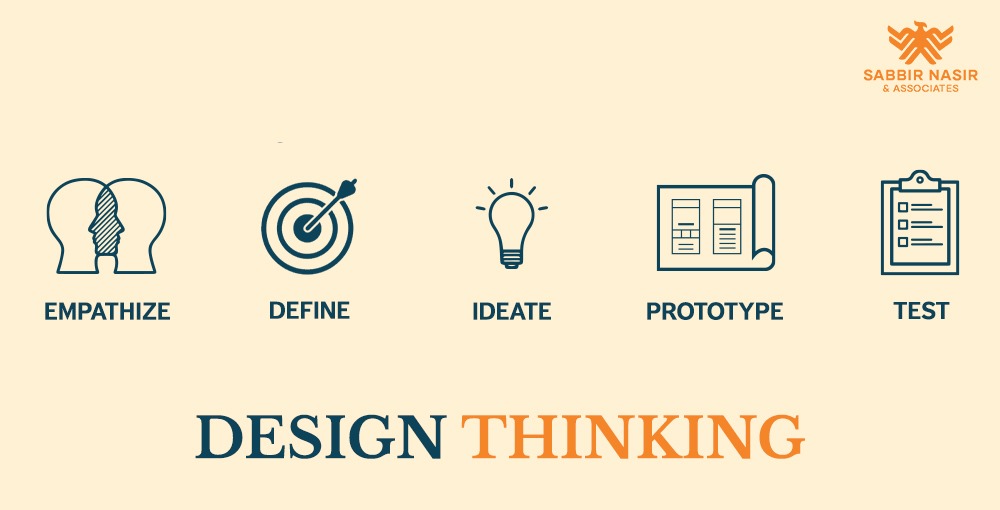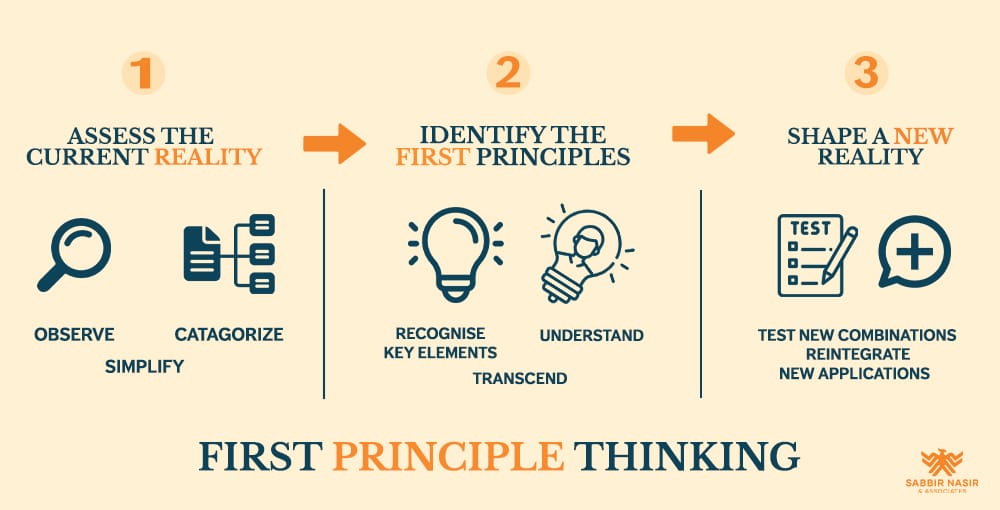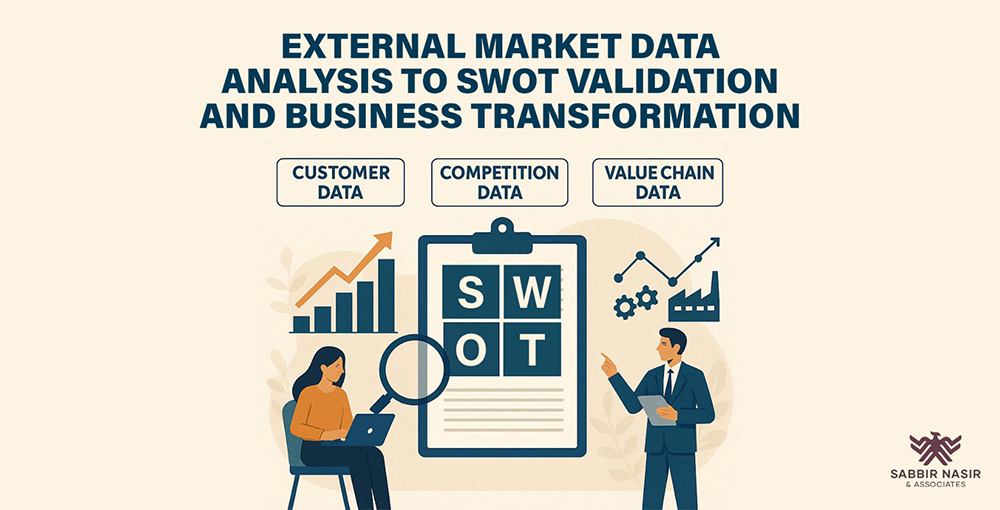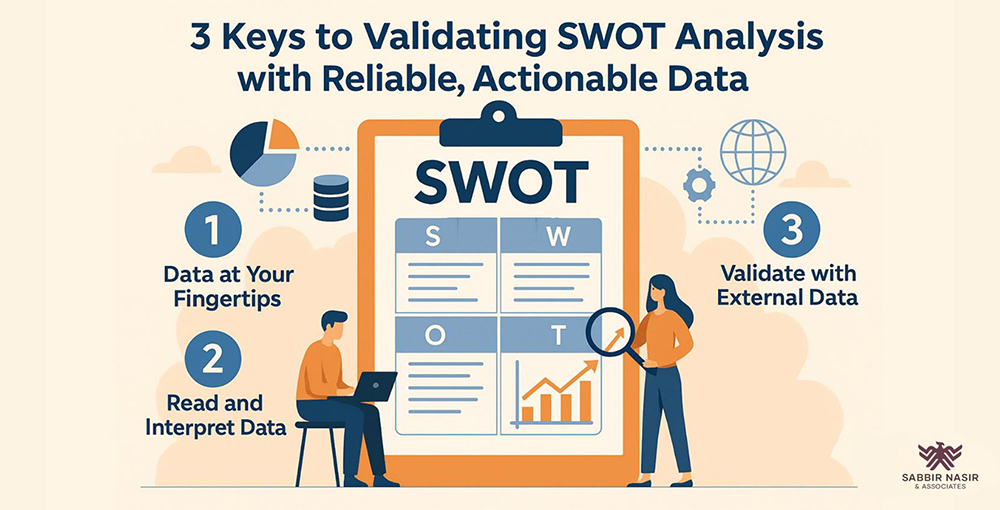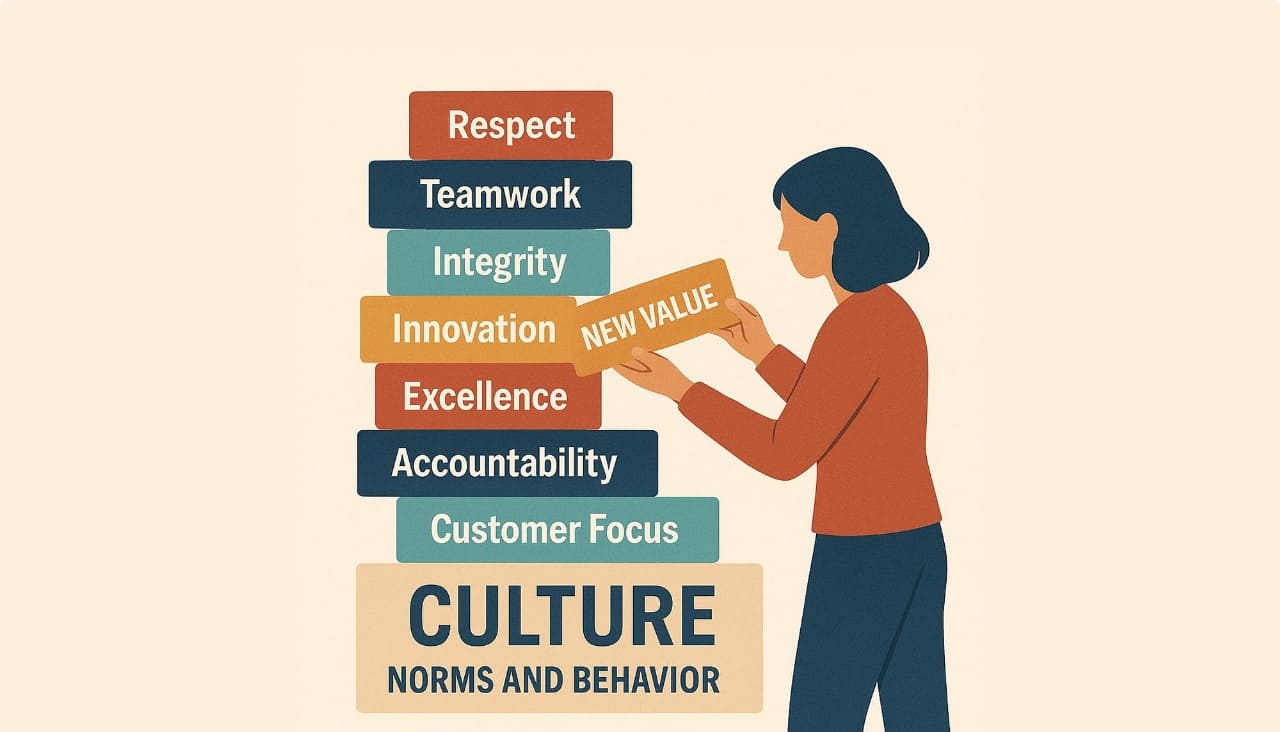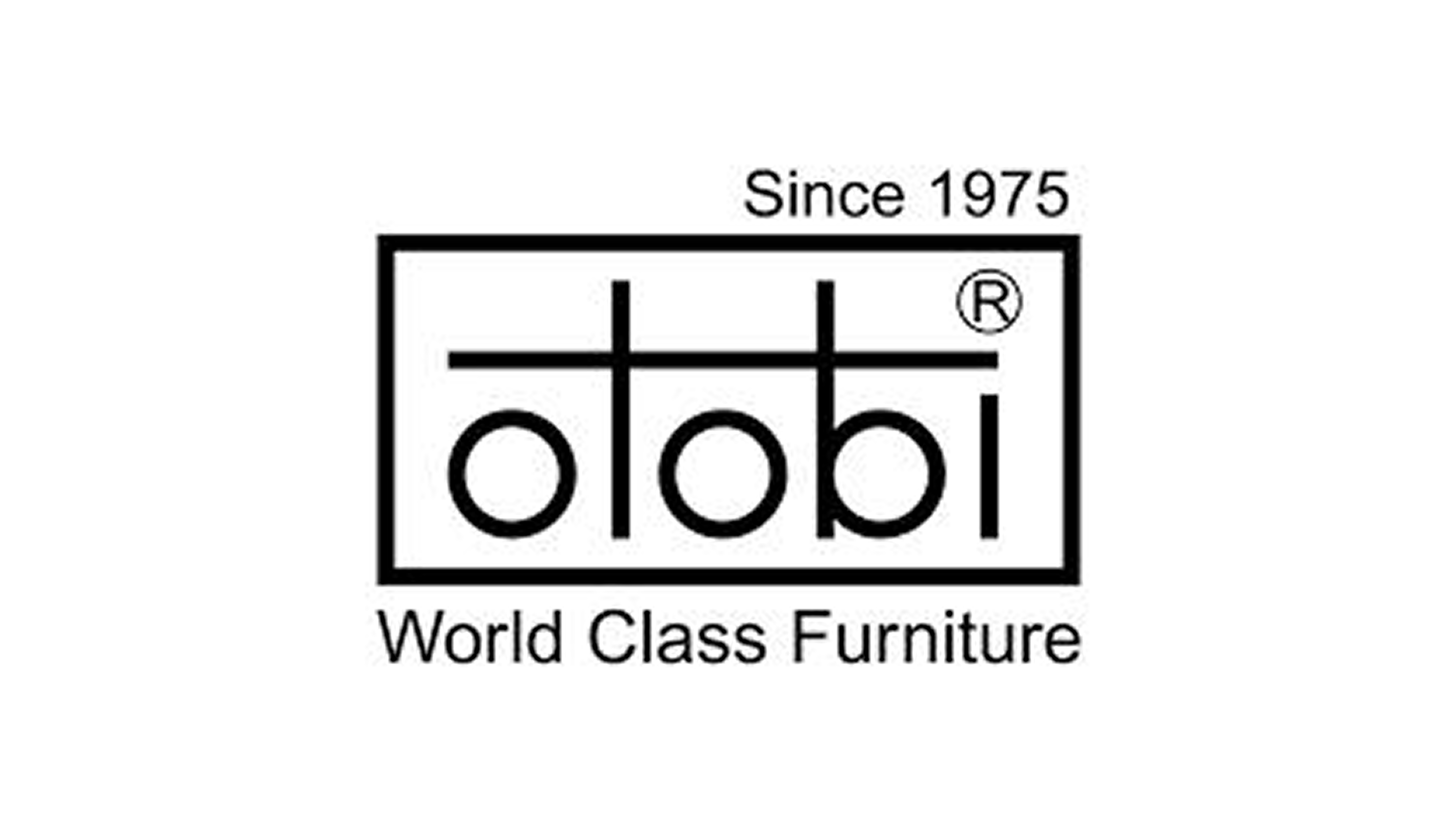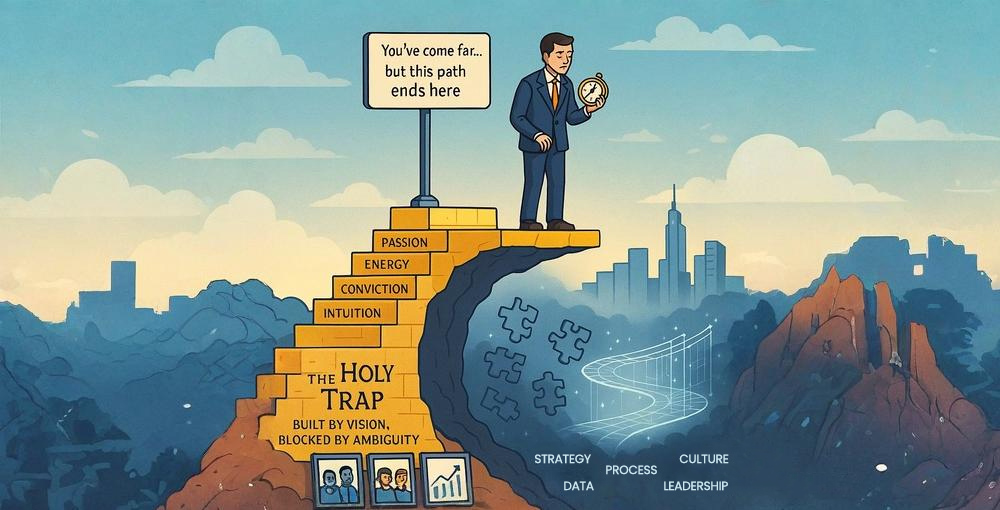Deep SWOT Analysis: Identifying Meaningful, Actionable Insights that Drive Growth
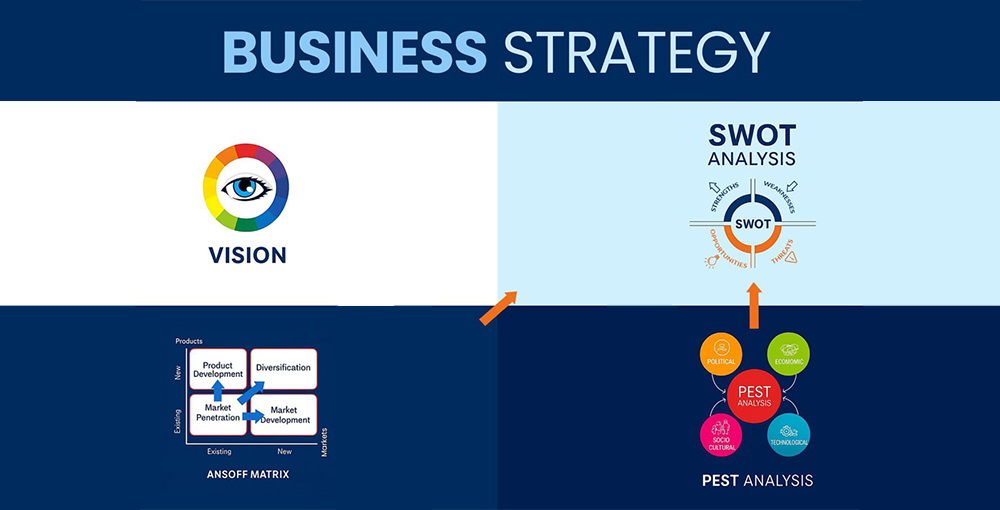
Summary: A thoughtful, strategic approach to SWOT analysis is essential for founder-led companies seeking to break free of stagnation, achieve business transformation, and scale to $100 million and beyond. In this article, we discuss the Sabbir Nasir Transformation Framework methodology for SWOT and how our approach is unlike any other model in the world.
Founder-led companies that achieve early success often hit a wall. They’re doing well but they get stuck in what we call the Holy Trap. Despite their passion and positive traits, they become trapped by a lack of clarity about what they want to achieve and how to achieve it.
To break free from the Holy Trap, these companies must move to the articulation phase of the Sabbir Nasir Transformation Framework (SNTF).
This begins with clarifying the organization’s vision and the values that support the new vision.
The next step is to articulate strengths, weaknesses, opportunities, and threats (SWOT). SWOT analysis is common practice for businesses preparing for various changes, such as rebranding, a new marketing program, or a technology overhaul.
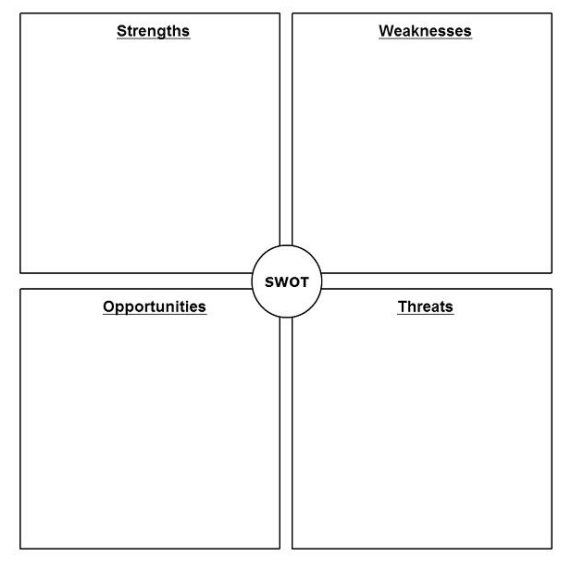
The Average SWOT Analysis: Simplistic and Irrelevant
The SWOT analysis is one of the most misused and misunderstood strategic planning tools in business. Many leaders and vendors approach SWOT analysis as four lists and a series of boxes to be checked.
Not much thought is given to the context around each item included in the SWOT analysis. Not every facet of the business is captured in the analysis, leaving gaps that are neglected.
The end result is typically a bullet-pointed list on a whiteboard that tends to be overly simplistic, generic, and/or irrelevant, offering little if any insight into the state of the organization or a roadmap for positive change.
Our SWOT Methodology for Business Transformation
Our SWOT methodology through the SNTF is different than any model in the world.
This is not a brainstorming session or a linear process in which all strengths are listed, all weaknesses are listed, etc. Our approach to SWOT analysis is highly strategic and designed to dig deeper into every area of the organization. We analyze each item in its full context and examine its relationships and interdependencies.
This approach makes it possible to deliver meaningful, actionable insights. There are three core differentiators in the SWOT methodology through the SNTF:
1) We create narratives, not bullet points.
Bullet points never capture the full picture. SWOTs communicated in story form convey not only the “what” and the “who,” but the “how” and the “why” with rich context. Narratives engage stakeholders both emotionally and intellectually, preventing misinterpretation or oversimplification. Narratives also establish a clear connection with strategy and insight.
2) We look for opportunities based on your vision.
Articulating the vision for the organization is an essential prerequisite to the SWOT analysis. Vision opens your eyes to opportunities. We want to see the same opportunities that you are seeing. Then we can simultaneously explore limitations and threats that could prevent you from seizing each opportunity.
3) We apply the Ansoff Matrix to plot growth paths.
The Ansoff Matrix, also called the Product/Market Expansion Grid, is a tool that helps businesses identify growth strategies. We use the Ansoff Matrix to connect SWOT narratives with Ansoff quadrants and understand the risks and rewards associated with various growth options.
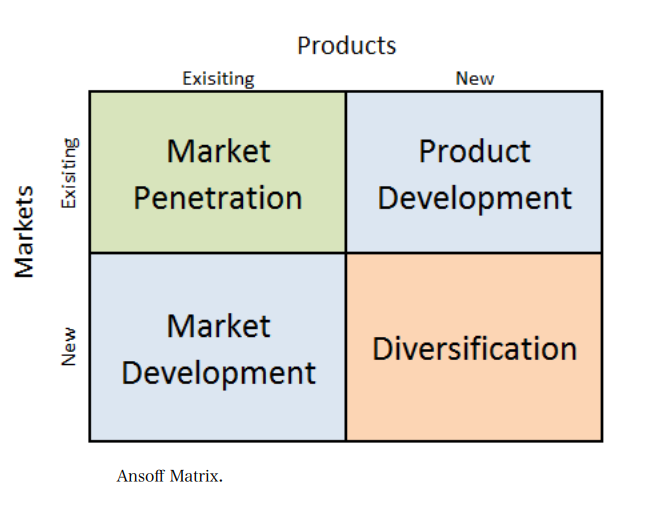
We also incorporate a political, economical, sociocultural, and technological (PEST) analysis to assess macro-environmental influences that could affect the performance and success of the organization.
Real-World SWOT Analysis
Let’s look at highlights from the SWOT analysis we performed during the business transformation of Otobi, a successful but stagnant founder-led company that would eventually become the largest furniture manufacturer and retailer in Bangladesh.
Why do customers buy from us?
This fundamental question launched our exploration of Otobi’s strengths. We determined that office owners who would typically import furniture from China or Malaysia chose Otobi because Otobi offered similar quality furniture, manufactured locally, at a lower price.
But that was just the beginning of the conversation.
How was this strength possible?
First, Otobi adopted technology quickly and cost-effectively. They traveled to China to learn their manufacturing processes. Then they bought the same machines, deployed them at Otobi facilities, and learned to use them.
Second, Otobi leveraged its deep knowledge of the supply chain and sourced materials such as boards, laminates, and hardware from Malaysia and China.
Third, the founder’s strong relationships with suppliers and commercial customers had built trust and removed friction from sourcing to stores.
What limitations were holding back growth?
While articulating strengths, we identified weaknesses that were keeping people from buying Otobi furniture.
Although homeowners wanted to purchase furniture from Otobi, they felt the furniture was too expensive and couldn’t match the design and material quality of imported furniture. Otobi furniture was perceived to be more suitable for offices.
What opportunities would fulfill our vision?
We reflected on the company’s newly articulated vision to increase Otobi’s presence in middle-class and lower-middle-class households and expand beyond Bangladesh. We saw an opportunity for growth in home furniture, including new lines made from wood and MDF. This would fulfill the founder’s new vision.
Then we explored weaknesses to determine what Otobi needed to improve to capture those opportunities and honor the new vision.
Otobi was lacking:
Visual merchandising and store designing capabilities.
A robust export operation with a sales division.
A material management process and costing that were designed for home furniture.
A strong value chain due to dependence on imported materials and gaps in backward linkages.
Market research and insights into household furniture customers – their needs, preferences, and aspirations.
What threats could keep us from capturing opportunities?
Competitors had started copying the Otobi model, offering similar furniture at lower prices. Customers could not be expected to pay higher prices for essentially the same furniture.
Our PEST analysis revealed negative deforestation (5%). This would threaten the export opportunity because local raw materials could become scarce. From a technology perspective, the emergence of online furniture retailing, as well as augmented reality and international retailers, were threats. Also, the owner and founder of Otobi, who was Hindu, felt threatened by the rise of Islamic populism.
Otobi would have to adapt quickly to overcome these challenges.
Applying the Ansoff Matrix
Once SWOTs have been articulated in narrative form, organizations must acquire strategic assets or competence, or offset threats, to enable opportunities to be captured and the vision to be realized.
We integrated the SWOT analysis for Otobi with the Ansoff Matrix, starting with market penetration, existing market, and existing product. What gaps and limitations must be overcome? What are the best opportunities for growth? What threats could hold them back?
Next, we moved to product development, market development, new market, and new product. We navigated the same process, exploring opportunities, limitations, and threats. The last step involved exploring potential growth through diversification.
The Ansoff Matrix informed our decisions about where to invest and what strategies to pursue across each growth sector.
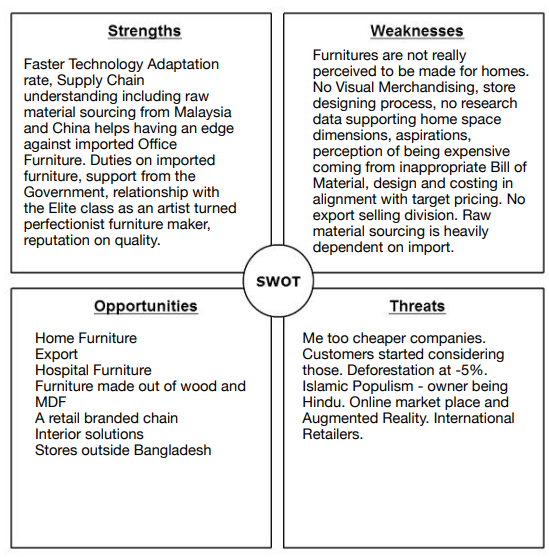
SWOT Analysis: A Transformational Discipline
This real-world example of Otobi illustrates that SWOT analysis through the SNTF is far more intricate than lists and checked boxes. Articulation of SWOTs in a thoughtful, strategic way is critical to successful business transformation.
SWOT analysis should touch every aspect of the organization – internal and external, operational and strategic – to deliver meaningful, actionable insights that drive growth.



